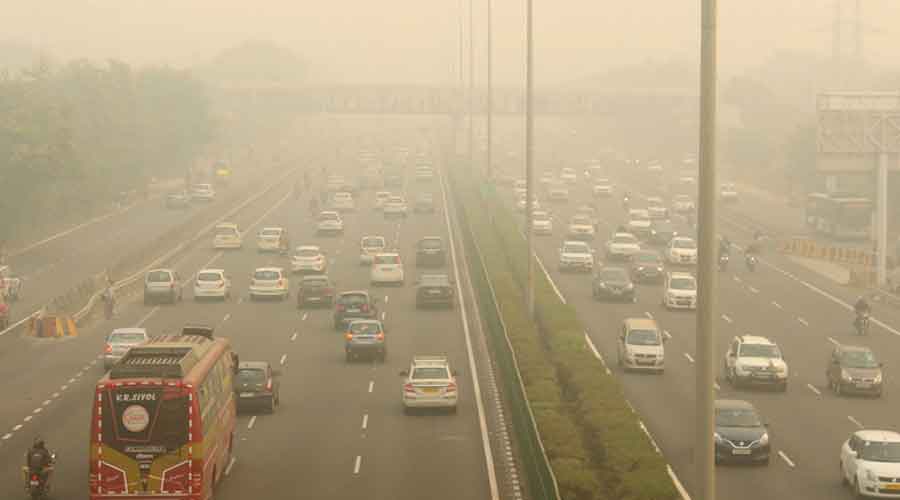The air quality was ‘poor’ at two locations in Kolkata on Friday and ‘moderate’ in five others, signalling the start of a drop in air quality that has become a standard feature in the city during winter.
An official of the West Bengal Pollution Control Board (WBPCB) said Friday was possibly the first day since last winter when none of the seven air quality monitoring stations of the board in the city reported ‘good’ or ‘satisfactory’ air quality.
“Friday is also possibly the first day since last winter when two stations reported poor air quality,” said the official.
‘Poor’ air can cause ‘breathing discomfort to most people on prolonged exposure’, according to the Central Pollution Control Board. ‘Moderate’ air causes ‘breathing discomfort to people with lungs, asthma and heart diseases’.
All seven monitoring stations recorded ‘good’ and ‘satisfactory’ air during Diwali, which experts said was the result of the rain that washed out toxic elements released by firecrackers.
The Central Pollution Control Board has six grades for the air quality of a place. ‘Moderate’ and ‘poor’ are the two middle grades. A further drop would mean the ‘worst’.
On Friday, the continuous air quality monitoring stations at the Victoria Memorial and on the BT Road campus of Rabindra Bharati University recorded ‘poor’ air quality.
Air quality readings were ‘moderate’ at the monitoring stations at Ballygunge, Bidhannagar, Fort William, Jadavpur and Rabindra Sarobar.
The primary pollutants at both the Victoria Memorial and Rabindra Bharati University were PM2.5, which are fine particles that can breach barriers and mix with the blood. Once in the bloodstream, the toxic particles can go and deposit in any organ and trigger health problems.
Owing to meteorological factors, the air closer to the ground becomes more polluted during winter, though the emission level during the season may be the same as in summer or the monsoon.
As temperatures drop during winter, the air closer to the ground remains cool and does not rise as readily as it does during summer. As a result, the toxic elements released into the air remain trapped closer to the ground for a longer duration.
Breathing in the air rich in deadly pollutants can lead to temporary or long-term illnesses. During the monsoon, the rain washes away toxic elements and keeps the air clean.
Besides a drop in temperature, wind speed also drops as winter approaches. Stronger winds help disperse the pollutants better.
The maximum temperature on Friday was 30.9 degrees Celsius.
The website of the India Meteorological Department, Kolkata, showed the wind speed at 5.30pm was 0kmph.
“The government’s efforts should be directed at curbing local emissions and not allowing them to rise,” said Abhijit Chatterjee, an associate professor in the environmental science section at Bose Institute.
“Open burning of solid waste and biomass, which is common from evening till night, has to be curbed. There are many such points of burning and the accumulated result is bad for the air,” said Chatterjee, who is also an adviser to the Kolkata Municipal Corporation on air quality management.
A study by the National Environmental Engineering Research Institute (NEERI), conducted in 2019, found that vehicles contributed 25 per cent to the generation of PM2.5 during winter. Wood combustion contributed 15 per cent.
